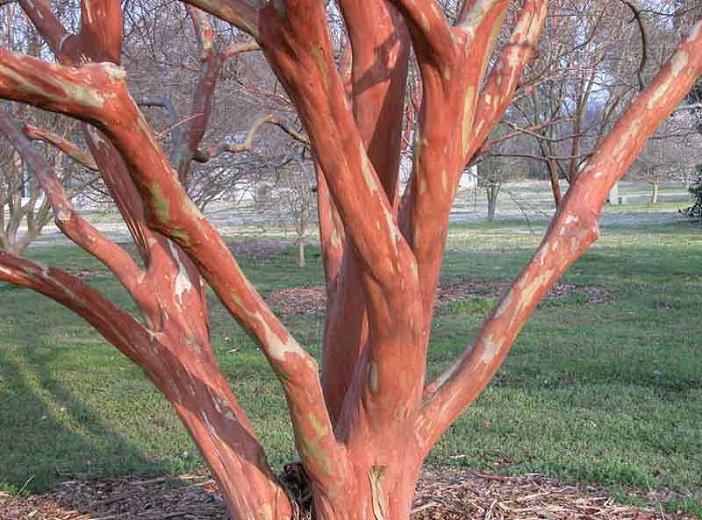
Cinnamon Crepe Myrtle
Cinnamon Crepe Myrtle
Botanical Name: LagerstroemiaFamily Name: Lythraceae – Loosestrife familyOrigin: Southern AsiaIn the spring and summer, two colorful cinnamon crepe myrtles (Lagerstroemia) greet you as you enter the grounds of Dodona Manor from Market Street. They are tall with beautiful flowers and an exfoliating bark revealing their cinnamon-colored wood. In autumn, their leaves will catch your eye as they turn bright red and yellow. In winter, their bark retains its beautiful amber color.
Notice the round crown formed by its branches. They will bloom from early summer to late fall, but the beauty of the trunk and branches remain year-round. It has been called the lilac of the south for its prevalence in southern regions.
The crepe myrtle comes from China. The Chinese referred to it as “Pai Jih Hung” or “hundred days red” for rich color and long bloom season. The English name “crepe myrtle” comes from the crepe-like texture of the flower. The British tried to grow it in England, but the country’s cool, wet weather kept it properly blooming. (Crepe myrtles love hot, sunny climates, and thus grow best in southern regions.) In the 1780s, André Michaux, plant explorer and botanist for King Louis XVI, introduced it to Charleston.
Crepe myrtles have often been used to symbolize love, beauty, longevity and good fortune. They are a common emblem of marriage. The flowers are considered to be the flowers of the gods, especially the Greek goddess of love. Throughout history, many cultures have believed that cultivating a crepe myrtle will bring love and peace to your family.
The crepe myrtle is so popular as a decorative tree that there is a crepe myrtle festival every year in Norfolk, Virginia. Maybe you can attend some summer.